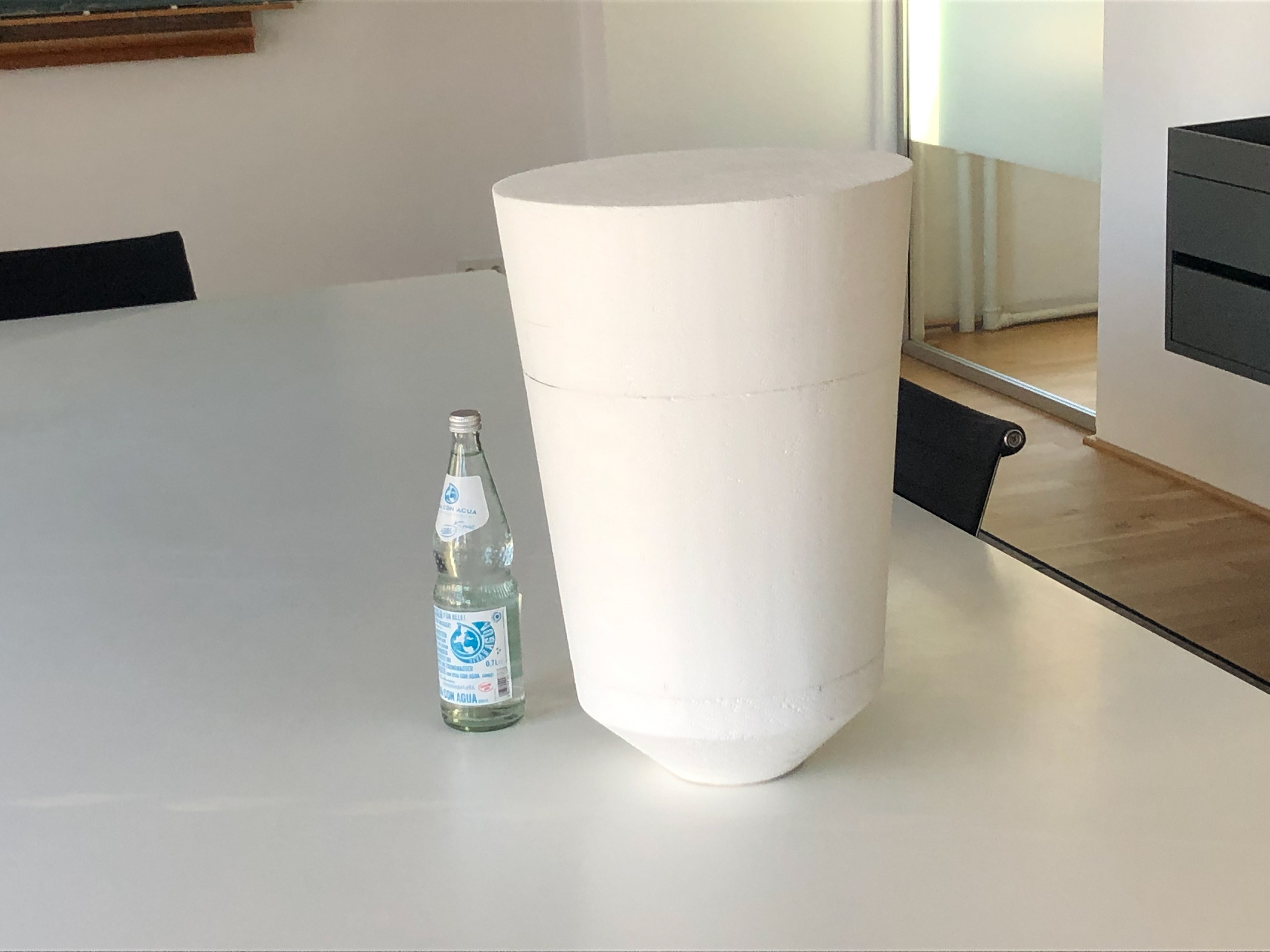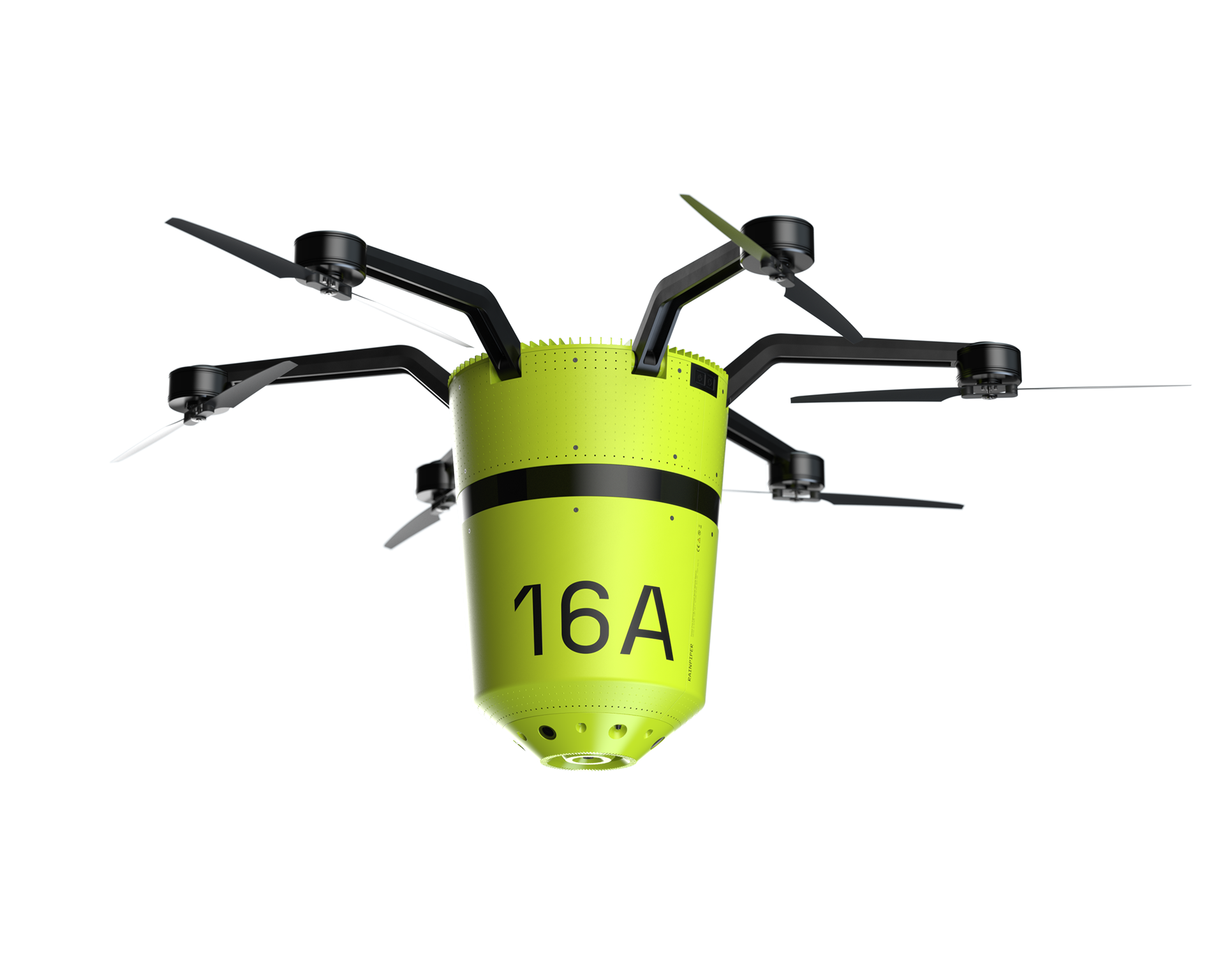
Lockheed C-130 Hercules Versatile transport aircraft equipped with coloured fire retardant
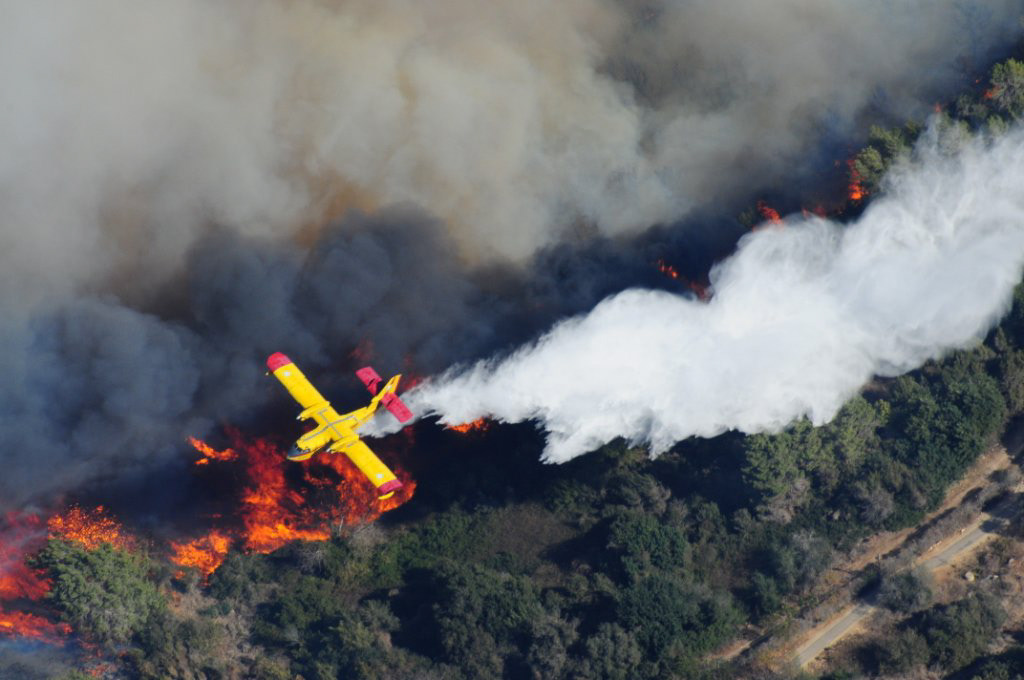
Canadair CL-415 Amphibious fire fighting aircraft
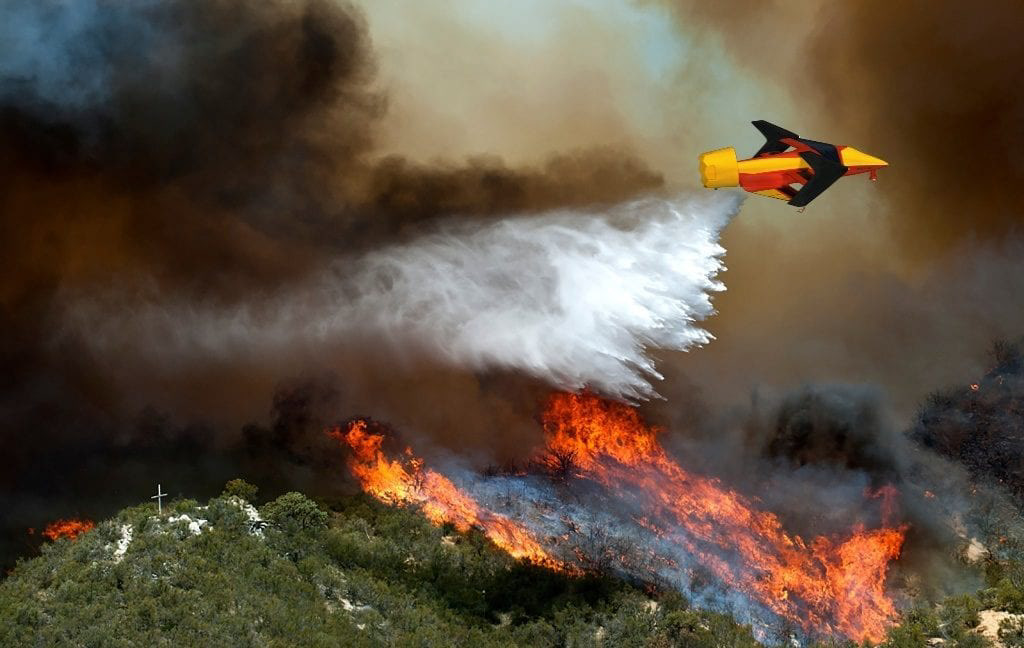
Faradair Aerospace BEHA M1-AT Electric unmanned aircraft used to fight forest fires

Air Tractor AT-802 Agricultural aircraft used to fight forest fires
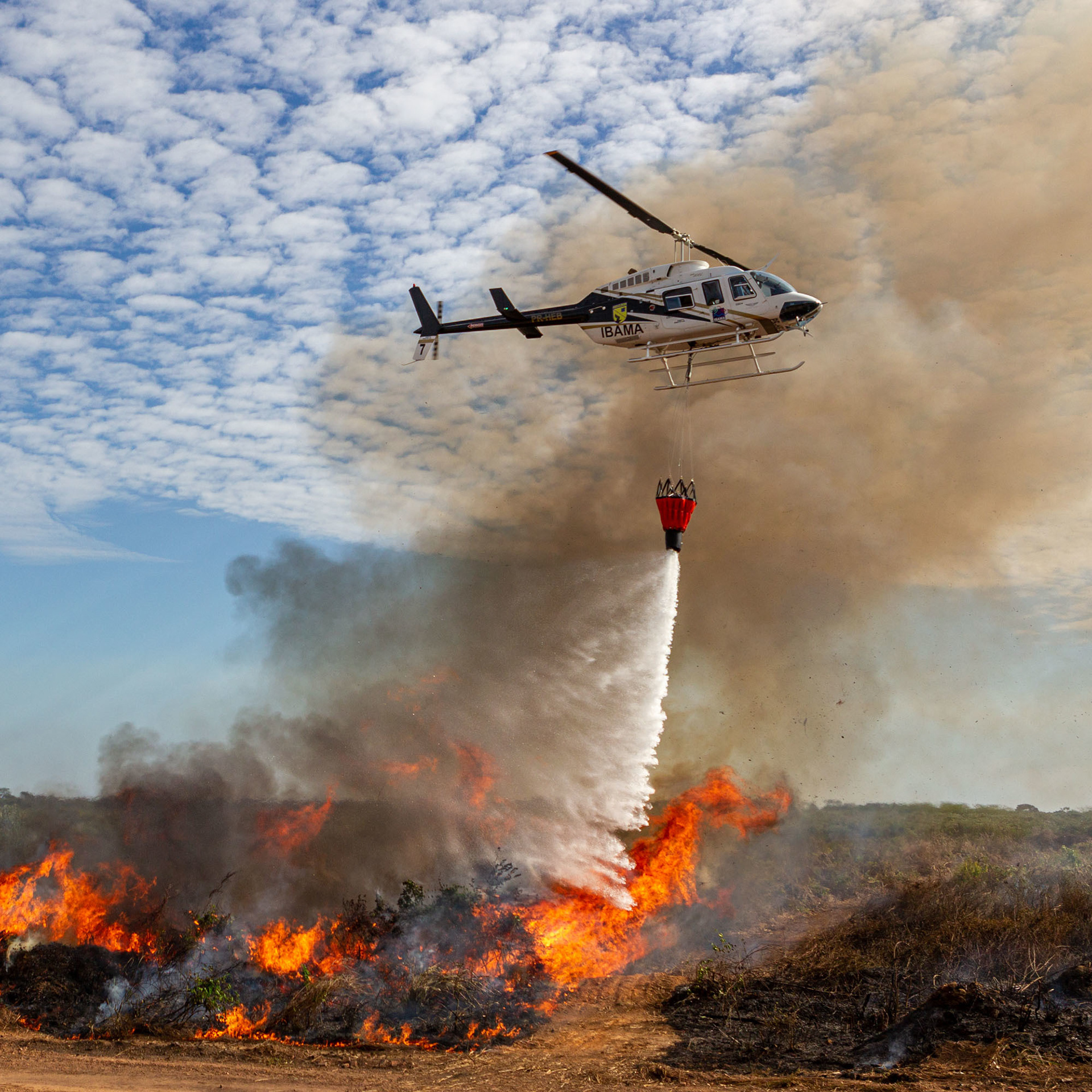

Transport helicopter of Bundespolizei Refills its Bambi Bucket in a Pumpkin (Water pool)

Singular Aircraft Flyox I Unmanned amphibious fire fighting aircraft

NatureTec Unmanned fire fighting coaxial helicopter drone
Rainpiper modules are loaded onto platform carrier
Platform is loaded onto transport vehicle
Transport vehicles drive Rainpiper platforms to the site
Transport vehicle positions itself for unloading of the platform or deployment of the drones
Folded drones move upwards on their landing pads, the rotor arms unfold and the drones start
Drone drops extinguishing agent over forest fire
Drone sprays extinguishing agent over forest fire
After the extinguishing agent is dropped, the drones autonomosly return to the platform to refill
Refilling the platform from water tanker and powering from power mobile generator.


